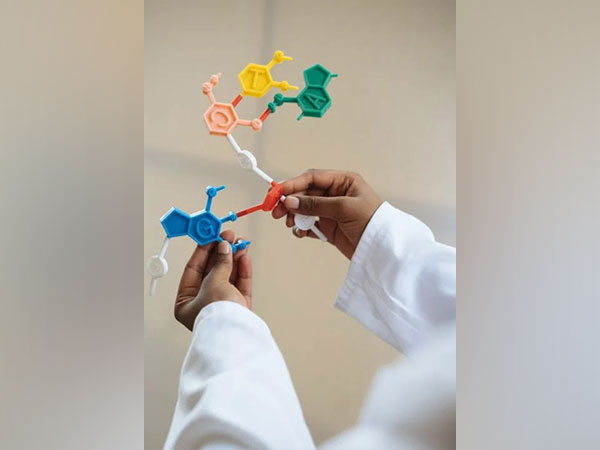Washington [USA], January 19 (ANI): Scientists at the University of Stuttgart have succeeded in controlling the structure and function of biological membranes with the help of ‘DNA origami’. It will help in facilitating the transportation of large therapeutic loads into cells. It now paves a new way for the targeted administration of medication and other therapeutic inventions.
The team of scientists used DNA origami structures as reconfigurable nanorobots that can reversibly change their shape and thereby influence their immediate environment in the micrometre range.
The researchers found that the transformation of these DNA nanorobots can be coupled with the deformation of the giant unilamellar vesicles (GUVs) and the formation of synthetic channels in the model GUV membranes.
These channels allow large molecules to pass through the membrane and can be resealed if necessary.
It is a very valuable instrument which can be added to the toolbox of synthetic biology. Prof. Laura Na Liu and her team published their findings in the journal Nature Materials.
The shape and morphology of a cell play a key role in its biological function. This corresponds to the principle of “form follows function,” which is common in modern fields of design and architecture. However, the transfer of this principle to artificial cells is a challenge in synthetic biology.
Advances in DNA nanotechnology now offer promising solutions. They allow the creation of novel transport channels that are large enough to facilitate the passage of therapeutic proteins across cell membranes.
In this emerging field, scientists such as Prof. Laura Na Liu, Director of the 2nd Physics Institute at the University of Stuttgart and Fellow at the Max Planck Institute for Solid State Research (MPI-FKF), have developed an innovative tool for controlling the shape and permeability of lipid membranes in synthetic cells.
These membranes are made up of lipid bilayers that enclose an aqueous compartment and serve as simplified models of biological membranes. They are useful for studying membrane dynamics, protein interactions, and lipid behaviour.
“This work is a milestone in the application of DNA nanotechnology to regulate cell behaviour,” Liu says.
The team works with giant unilamellar vesicles (GUVs), which are simple, cell-sized structures that mimic living cells. Using DNA nanorobots, the researchers were able to influence the shape and functionality of these synthetic cells.
DNA nanotechnology is one of Laura Na Liu’s main research areas. She is an expert in DNA origami structures — DNA strands that are folded by means of specifically designed shorter DNA sequences, so-called staples. (ANI)
Disclaimer: This story is auto-generated from a syndicated feed of ANI; only the image & headline may have been reworked by News Services Division of World News Network Inc Ltd and Palghar News and Pune News and World News
HINDI, MARATHI, GUJARATI, TAMIL, TELUGU, BENGALI, KANNADA, ORIYA, PUNJABI, URDU, MALAYALAM
For more details and packages











